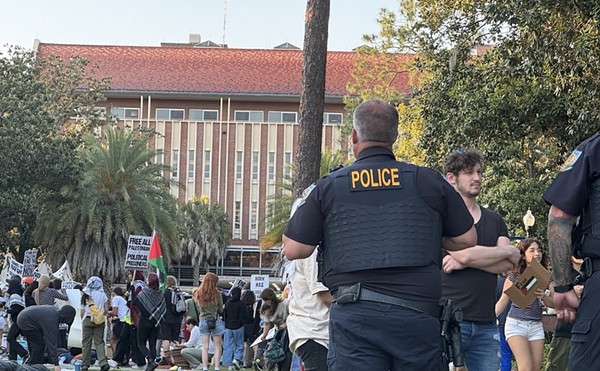When Bob Kealing met Margaret Fisher to talk about her relationship with legendary country-rock singer Gram Parsons, it was sort of a moment of epiphany. Kealing was working on a book about the legendary singer who never found the success he thirsted for until after his tragic death in 1973, and he could tell that Fisher had become weary of telling the same story over and over.
"At one point, we're sitting in this café … and I told her: 'You know, I really don't want to know about Gram's death,'" Kealing recalls. "And that's when she said to me: 'Imagine being defined by the worst day of your life.'"
Fisher first met Parsons when the two were students, and they reunited a decade later and picked up right where they'd left off. They were living in California, and both were heavy partyers – Parsons, in particular, had become such an abuser of drugs and alcohol that he'd become heavy and bloated, and his marriage was in a shambles. The 26-year-old musician had recently left his wife behind to record his album Grievous Angel, with Emmylou Harris. When recording was complete, Parsons and Fisher holed up in a room at the Joshua Tree Inn to celebrate the new record. Parsons, who'd been drinking all day, had scored some morphine and apparently he took too much. By the time Fisher was able to get help, it was too late. The up-and-coming young singer had overdosed, and Fisher's name has been tied to that moment ever since.
Likewise, so has Parsons' brief musical career. Though he's been noted as a highly influential musician who helped establish modern country and alt-country music, Parsons never had a hit record – his most popular album, Gram Parsons Archives Vol. 1: Live at the Avalon Ballroom 1969, wasn't released until more than 30 years after his death. Other than that, Grievous Angel was his most successful album, and even that wasn't released until after he died. It only reached No. 195 on the Billboard charts. As a result, his melancholy persona, drug addiction and – mostly – his untimely death have become as much a focal point of his fame as his music.
Indeed, imagine being defined by the worst – and last – day of your life.
That's part of the reason that Kealing's new book, Calling Me Home: Gram Parsons and the Roots of Country Rock, is so refreshing. While most retellings of the Parsons story let the tragedy of his drug abuse and death define the narrative, Kealing wanted to tell a different story. That's a point he had to make clear in many of the interviews he conducted with Parsons' family, friends and former bandmates, all of whom have grown accustomed to the typical lines of questioning about their relationship with Parsons.
Kealing traces Parsons' life from childhood through death using letters, images, music and an exploration of the musical climate in the South that helped influence the young Parsons and his peers. Born to a well-off family plagued with substance-abuse issues, depression and dysfunction, Parsons is alternately looked at by those around him with admiration or disdain – he's either a mythical musical genius or a poor little rich boy who squandered the opportunities presented to him. But Kealing's matter-of-fact approach creates a sympathetic human portrait of the man that neither glosses over nor sensationalizes him. Kealing allows interviewees to pay their respects or air their grievances without stripping them of dignity. There is no sense in reading the book that Kealing approached this project to prove a point – and that's one of the beauties of it.
Perhaps Kealing was able to approach the story without prejudice because he was never really a fan – his interest in Parsons, he says, was due to the singer's ties to Central Florida. Parsons' grandparents were the Snivelys, wealthy Winter Haven citrus barons, and he spent some of his formative years in Central Florida playing gigs with up-and-coming musical talents in the region's "youth center circuit" – a network of community centers where teens growing up in the 1960s gathered to catch shows and listen to music. Little spots like the Loch Haven Youth Center in Orlando (now the Loch Haven Neighborhood Center) and the Winter Park Youth Center hosted the likes of the young Tom Petty, Les Dudek, Gram Parsons, and Duane and Gregg Allman. Kealing was just as drawn to the idea of documenting the youth-center circuit as he was by Parsons – though he quickly found that Parsons' story was not a simple one.
During his life, Parsons brushed elbows with some of the biggest names in rock and country – the Rolling Stones, Roger McGuinn, Charlie Louvin – though he never enjoyed the same success as a lot of the people he knew and worked with. "The more I researched him, the more I found he was like a Forrest Gump figure," Kealing says. "He was in and out of so many music scenes in the '60s … and he always seemed to be in interesting places at the right time."
Much of that element of Parsons' life has been well-documented, but some of the more mundane musical and personal relationships hadn't been explored. Kealing talks to Parsons' childhood friends, schoolmates and neighbors, as well as early musical colleagues. Encouraging them to talk openly was cathartic for some – particularly those former friends who took part in the drug abuse and drinking but don't care to sensationalize it these days.
"There's really an element of redemption in this book," Kealing says. "Whether it's Polly Parsons [Gram's daughter] running a substance-abuse center or other musicians saying, 'Hey, that could just as easily have been me.'"
Since writing Calling Me Home, Kealing says he has become a Parsons fan – he says his favorite album is Return of the Grievious Angel, "because it has a lot of Kerouac imagery in it," and Kealing, as literary Orlandoans probably already know, is also the author of Kerouac in Florida: Where the Road Ends. As well, he's a founder of the Kerouac Project in Orlando, which purchased the College Park bungalow where Kerouac lived out some of his later years and turned it into a writers' residency. He says he sees an opportunity for someone – not him – to do something similar to honor Parsons. Parsons' fame is obscured by his tragedy, Kealing says, only because he didn't live long enough to realize his potential. But that doesn't mean somebody else can't help propel his music forward posthumously.
"Gram Parsons never had the big hit record," Kealing says. "But I think if someone were astute enough to put it all together and start re-releasing some of his songs … I think his time could come."
Calling Me Home: Gram Parsons and the Roots of Country Rock
By Bob Kealing
(University Press of Florida, 296 pages)

















